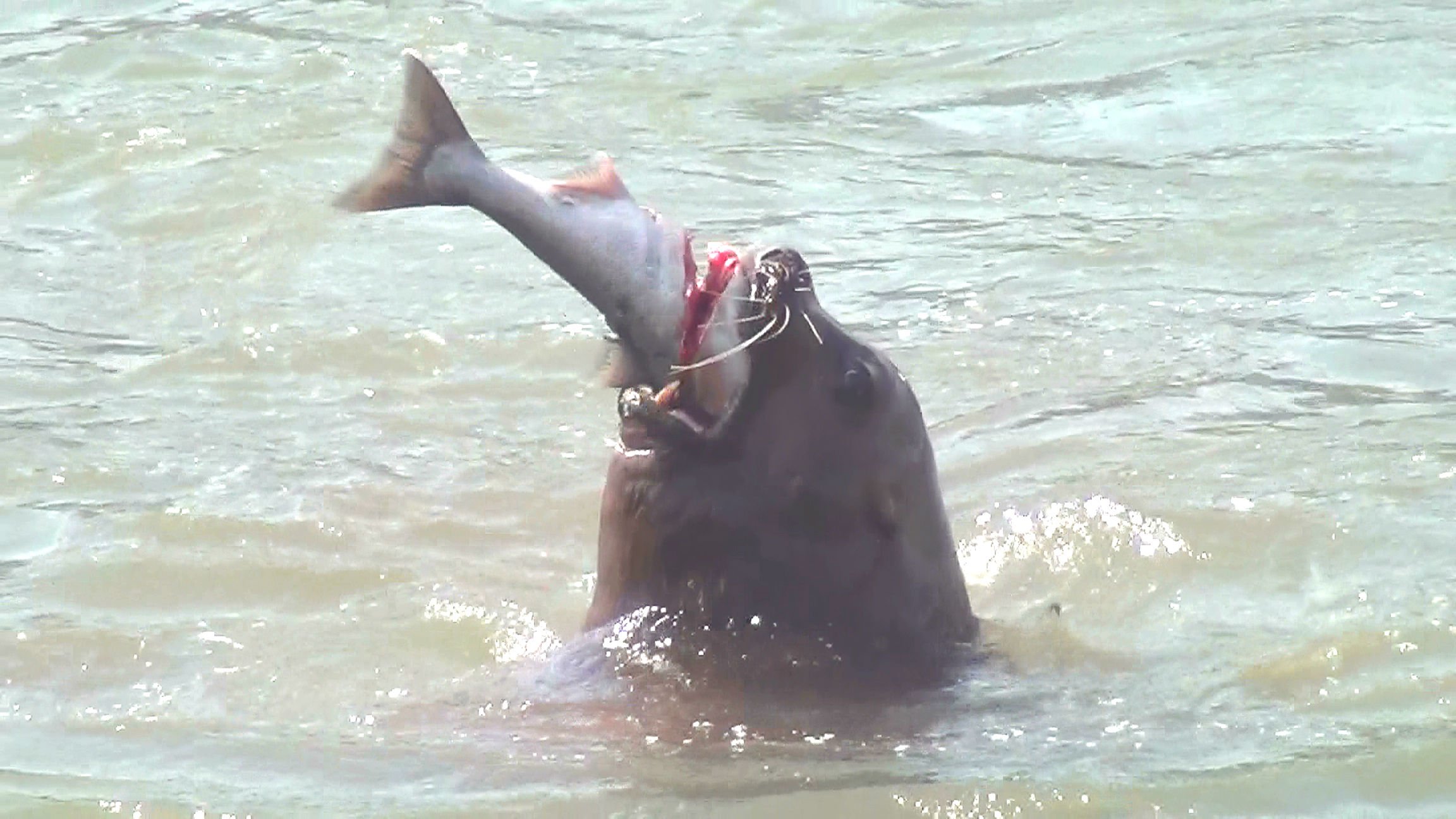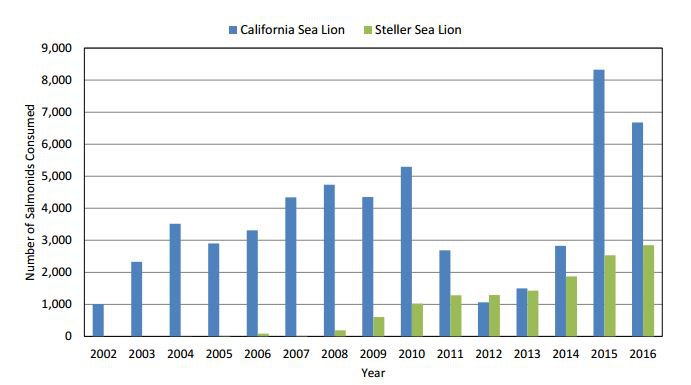Sea Lion Fish Feast
Sea lions consumed an estimated 5.8 percent of the adult salmon and steelhead run at Bonneville Dam in 2016, the second-largest annual total in 14 years.
- March 01, 2017
- John Harrison

Spring 2016 was a bad time of the year for salmon and steelhead at the tailrace, or downstream side, of Bonneville Dam.
The U.S. Army Corps of Engineers documented the second-largest number of fish-killing seals and sea lions since observations and recordkeeping began in 2002 -- 190 unique individuals -- and also the second-largest kill of salmon and steelhead -- 9,525 fish, or an estimated 5.8 percent of the run. That was the highest percentage of an annual run taken by seals and sea lions at the dam since 2002. The counts are based on observations from shore and expanded for hours when observation is not possible.
According to a report issued by the Corps, California sea lions consumed an estimated 6,676 fish and Steller sea lions consumed 2,849 fish. Of the 9,525 total, the majority – 8,709 fish – were spring Chinook salmon (an estimated 4.5 percent of the spring Chinook run). Sea lions also consumed 302 steelhead (an estimated 4.9 percent of the steelhead run between January 1 and March 31; 143 were winter steelhead), with Steller sea lions consuming the majority. The chart below shows salmon and steelhead consumption by marine mammals in the Bonneville Dam tailrace over time.

Chart: U.S. Army Corps of Engineers.
Sea lions also consumed Pacific lamprey and white sturgeon. The estimated lamprey consumption was 501, of which 412 (82.2 percent) were taken by California sea lions. This was the third-highest lamprey consumption estimate at the dam since 2004. The estimated consumption of white sturgeon was 90 fish, with 83 (93 percent) attributed to Steller sea lions. This is the second-lowest estimated consumption since 2005, when Steller sea lions were first observed feeding on sturgeon at Bonneville Dam.
According to the report, between January 1 and May 31 of last year, 190 unique individual seals and sea lions were documented near the downstream side of the dam at the dam: 149 California sea lions, 41 Steller sea lions. No harbor seals were observed. The maximum number observed in a single day was 120, and the daily mean was 10.8 California sea lions and 18.0 Stellers.
The Corps reported that hazing the marine mammals from shore and from boats using non-lethal pyrotechnics had only limited effectiveness. Since 2008, the Oregon and Washington fish and wildlife departments have captured and branded sea lions and, when branded animals return and resume killing fish, removed them. The state agencies reported that the removal program in 2016 was the most successful to date, with 59 California sea lions removed from the river. Only individually identifiable California sea lions can be removed from the river. These have to have been present for five separate days, observed eating salmon, and subjected to hazing before going through the process of being listed for authorized removal. The states have not requested authority to remove Steller sea lions.
Sea lions annually arrive in the Columbia River estuary and Bonneville Dam 140 miles upriver in the spring and leave by mid-June for breeding grounds off the coast of Southern California. Because of this timing, their primary prey are spring Chinook salmon and steelhead (summer and winter runs).
Links:
Predator management section of the 2014 Columbia River Basin Fish and Wildlife Program


